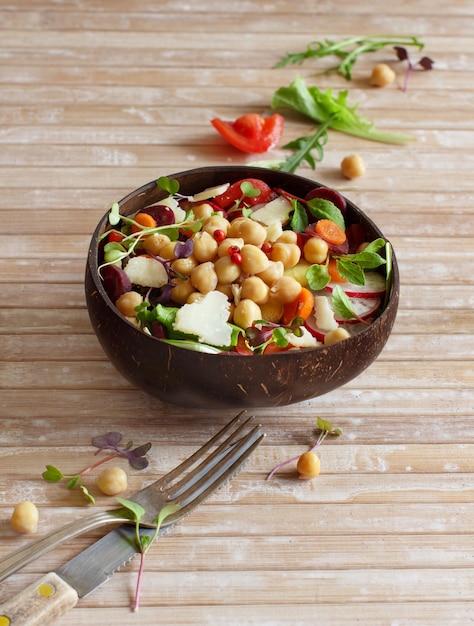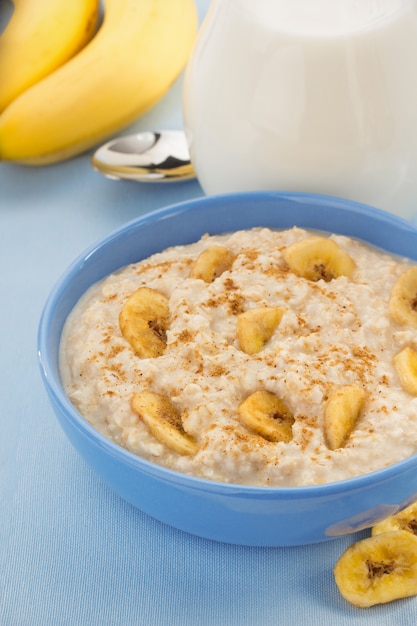7 Best High-Fiber Foods to Lower Cholesterol by 15% in 3 Months

Discover the top 7 high-fiber foods that can significantly lower your cholesterol levels by 15% in just 3 months, improving your heart health naturally.
Are you looking for a natural way to lower your cholesterol levels and improve your heart health? Incorporating high-fiber foods into your diet can be a game-changer. Let’s explore the 7 Best High-Fiber Foods to Lower Cholesterol by 15% in 3 Months, helping you achieve a healthier lifestyle through simple dietary changes.
Understanding the Link Between Fiber and Cholesterol
Fiber plays a crucial role in managing cholesterol levels. It’s essential to understand how different types of fiber interact with cholesterol in your body to harness the full benefits of a high-fiber diet.
How Fiber Works to Lower Cholesterol
Fiber primarily lowers cholesterol through two mechanisms: binding to cholesterol in the digestive tract and promoting the excretion of bile acids. This process compels the body to use more cholesterol to produce bile acids, reducing overall cholesterol levels.
Additionally, soluble fiber can reduce the absorption of cholesterol into your bloodstream. This type of fiber dissolves in water to form a gel-like material, which can bind to cholesterol and prevent it from being absorbed.
Types of Fiber: Soluble vs. Insoluble
There are two main types of fiber: soluble and insoluble. Soluble fiber is particularly effective at lowering cholesterol, while insoluble fiber helps with digestive health by adding bulk to the stool and preventing constipation.
- Soluble Fiber: Dissolves in water; found in oats, beans, apples, and citrus fruits.
- Insoluble Fiber: Does not dissolve in water; found in whole grains, vegetables, and wheat bran.
- Combined Benefits: Both types of fiber are important for overall health and contribute to a balanced diet.
Incorporating both soluble and insoluble fiber into your diet ensures you receive the full spectrum of health benefits, promoting both heart health and digestive wellness.
By understanding the role and types of fiber, you can make informed dietary choices that significantly impact your cholesterol levels and overall well-being. This knowledge is the first step toward effectively using high-fiber foods to improve your health.
Oats: The Heart-Healthy Breakfast Champion
Oats are often hailed as one of the best foods for heart health, and for good reason. Its soluble fiber content makes it a powerful tool in lowering cholesterol levels.

The Power of Beta-Glucan
The key to oat’s cholesterol-lowering ability lies in its high concentration of beta-glucan, a type of soluble fiber. Beta-glucan forms a gel-like substance in the digestive system, which can bind to cholesterol and prevent its absorption.
Regular consumption of oats can lead to a significant reduction in LDL cholesterol, often referred to as “bad” cholesterol. This reduction can decrease the risk of heart disease and stroke.
How to Incorporate Oats Into Your Diet
There are numerous ways to enjoy oats, making it easy to add this heart-healthy food to your daily routine. From traditional oatmeal to creative baking recipes, oats can be a versatile ingredient.
- Oatmeal: Start your day with a bowl of plain oatmeal, topped with fruits and nuts for added flavor and nutrients.
- Baked Goods: Use oat flour or rolled oats in muffins, cookies, and bread for a fiber boost.
- Smoothies: Add oats to your smoothies for a creamy texture and increased fiber content.
Ensure you choose whole oats or steel-cut oats over heavily processed varieties to maximize the fiber content and health benefits. With its versatility and proven cholesterol-lowering properties, oats is an excellent addition to any heart-healthy diet.
Oats provide a simple yet effective way to control cholesterol levels and improve heart health. Adding oats to your diet can lead to noticeable improvements in your cholesterol profile and overall well-being.
Beans and Legumes: Fiber-Rich Powerhouses
Beans and legumes are nutritional powerhouses packed with fiber, protein, and essential nutrients. They offer significant benefits for lowering cholesterol and promoting overall heart health.
The Cholesterol-Lowering Benefits of Beans
Beans are particularly effective at lowering cholesterol due to their high soluble fiber content. This fiber helps to bind cholesterol in the digestive system, preventing its absorption into the bloodstream.
Regular consumption of beans can lead to a noticeable reduction in LDL cholesterol levels. This effect is enhanced by the complex carbohydrates and protein in beans, which contribute to satiety and help manage weight, an important factor in heart health.
Variety of Beans to Include in Your Diet
There are many varieties of beans and legumes to choose from, making it easy to incorporate them into your meals. Each type offers a unique flavor and nutritional profile.
- Kidney Beans: Versatile and commonly used in chili and stews.
- Chickpeas: Great in salads, hummus, and roasted snacks.
- Lentils: Cook quickly and are perfect for soups and stews.
All beans are beneficial for cholesterol management, so feel free to experiment and find your favorites. Incorporating a variety of beans ensures you receive a broad spectrum of nutrients and flavors.
Beans and legumes are a versatile and nutritious option for lowering cholesterol and improving heart health. Adding them to your diet can make a significant difference in your cholesterol levels and overall well-being.
Apples and Citrus Fruits: Sweet Ways to Lower Cholesterol
Fruits like apples and citrus fruits are not only delicious but also offer a sweet way to lower cholesterol. Their high fiber and antioxidant content contribute to heart health.
Pectin: The Secret Weapon in Apples
Apples contain a soluble fiber called pectin, which is highly effective at reducing cholesterol levels. Pectin binds to cholesterol in the digestive tract, preventing its absorption.
Regular apple consumption can lead to a significant decrease in LDL cholesterol. This effect is amplified by the antioxidants in apples, which help to protect against oxidative stress and inflammation, key factors in heart disease.
Citrus Fruits: Vitamin C and Fiber
Citrus fruits, such as oranges, grapefruits, and lemons, are packed with vitamin C and soluble fiber. These nutrients work together to promote heart health and lower cholesterol.

- Oranges: Rich in vitamin C and fiber; great for juices and snacks.
- Grapefruits: Contain antioxidants and fiber; enjoy them as a breakfast staple.
- Lemons: Use in dressings and beverages; provide a boost of vitamin C and flavor.
Citrus fruits not only lower cholesterol but also provide a range of other health benefits, including boosting the immune system and improving skin health. Their sweet and tangy flavor makes them a delightful addition to any diet.
Apples and citrus fruits offer a tasty and convenient way to lower cholesterol and improve heart health. These fruits are an excellent choice for anyone looking to manage their cholesterol levels through diet.
Nuts and Seeds: Healthy Fats and Fiber Combined
Nuts and seeds are often overlooked when it comes to cholesterol management, but they are a fantastic source of healthy fats and fiber. Incorporating them into your diet can have a positive impact on your heart health.
The Role of Healthy Fats in Cholesterol Reduction
Nuts and seeds are rich in monounsaturated and polyunsaturated fats, which can help lower LDL cholesterol while raising HDL cholesterol, often referred to as “good” cholesterol.
These healthy fats also have anti-inflammatory properties, which can protect against heart disease. The combination of healthy fats and fiber makes nuts and seeds a powerful tool for managing cholesterol levels.
Best Nuts and Seeds for Lowering Cholesterol
While all nuts and seeds offer health benefits, some are particularly effective at lowering cholesterol. These include almonds, walnuts, flaxseeds, and chia seeds.
- Almonds: High in monounsaturated fats and fiber; a great snack option.
- Walnuts: Rich in omega-3 fatty acids; beneficial for heart and brain health.
- Flaxseeds: Excellent source of soluble fiber and omega-3 fatty acids; add to smoothies and baked goods.
When consuming nuts and seeds, be mindful of portion sizes, as they are calorie-dense. A small handful a day can provide significant health benefits without leading to weight gain.
Nuts and seeds offer a delicious and convenient way to incorporate healthy fats and fiber into your diet. Adding them to your daily routine can help lower cholesterol and improve overall heart health.
Whole Grains: Beyond Just Fiber
Whole grains are an essential component of a heart-healthy diet. They provide more than just fiber; they also offer a range of vitamins, minerals, and antioxidants that contribute to overall well-being.
The Comprehensive Benefits of Whole Grains
Whole grains lower cholesterol by providing soluble fiber, which helps to bind cholesterol in the digestive system. Additionally, the nutrients in whole grains support heart health and help regulate blood sugar levels.
Consuming whole grains can lead to a decrease in LDL cholesterol and a reduced risk of heart disease. The complex carbohydrates in whole grains also provide sustained energy, preventing energy crashes and promoting a stable mood.
Examples of Whole Grains to Include
There are many types of whole grains to choose from, each offering a unique flavor and nutritional profile. These include brown rice, quinoa, whole wheat, and barley.
- Brown Rice: A versatile staple; great as a side dish or in bowls.
- Quinoa: A complete protein source; excellent in salads and as a grain alternative.
- Whole Wheat: Use in bread, pasta, and baked goods for a fiber boost.
When selecting whole grain products, make sure to read the labels carefully. Look for products that list whole grains as the primary ingredient and avoid those with added sugars and refined grains.
Whole grains offer a wide range of health benefits beyond just fiber. Adding them to your diet can help lower cholesterol, improve heart health, and provide sustained energy throughout the day.
Leafy Green Vegetables: Nutrient-Dense and Heart-Protective
Leafy green vegetables are packed with vitamins, minerals, and fiber, making them an essential part of a heart-healthy diet. Their nutrient density and low-calorie content make them a smart choice for cholesterol management.
The Antioxidant Power of Leafy Greens
Leafy greens contain antioxidants that protect against oxidative stress and inflammation, key factors in heart disease. These antioxidants also help to lower cholesterol levels and improve overall cardiovascular health.
Consuming a variety of leafy greens ensures you receive a broad spectrum of nutrients, promoting overall well-being. The combined effects of fiber, vitamins, and antioxidants make leafy greens a powerhouse for heart health.
Top Leafy Greens for Cholesterol Management
Some leafy greens are particularly beneficial for lowering cholesterol. These include spinach, kale, and collard greens.
- Spinach: Versatile and rich in vitamins; add to salads, smoothies, and cooked dishes.
- Kale: Packed with antioxidants and fiber; enjoy in salads, soups, and roasted snacks.
- Collard Greens: High in fiber and nutrients; traditionally cooked but can also be used in salads.
Leafy greens can be easily incorporated into your diet in a variety of ways. Aim to include a serving of leafy greens in at least one meal a day to reap their heart-protective benefits.
Leafy green vegetables are a nutrient-dense and heart-protective addition to any diet. Adding them to your meals can help lower cholesterol, improve heart health, and promote overall well-being.
| Key Point | Brief Description |
|---|---|
| 🍎 Fiber & Cholesterol | Soluble fiber binds cholesterol in the digestive tract, reducing absorption. |
| 🥣 Oats for Heart Health | Beta-glucan in oats forms a gel that helps lower LDL cholesterol. |
| 🌱 Beans & Legumes | High soluble fiber helps prevent cholesterol absorption. |
| 🍏 Fruits & Pectin | Apples and citrus fruits contain pectin, which binds to cholesterol. |
Frequently Asked Questions
▼
Aim for at least 25-35 grams of fiber per day. This amount has been shown to effectively lower LDL cholesterol levels and improve heart health.
▼
Yes, it’s possible, but results vary. A high-fiber diet combined with regular exercise and a healthy lifestyle can significantly impact cholesterol levels.
▼
Increasing fiber intake too quickly can cause gas, bloating, and discomfort. Gradually increase your fiber intake and drink plenty of water.
▼
Find alternatives that you enjoy. Many high-fiber options are available, so choose foods that fit your taste and dietary preferences to ensure consistency.
▼
It’s crucial. Fiber absorbs water, so adequate hydration prevents constipation and ensures fiber moves smoothly through your digestive system, maximizing its benefits.
Conclusion
Incorporating these high-fiber foods into your diet is a powerful step towards lowering your cholesterol and improving your heart health. Remember, consistency is key, and combining these dietary changes with regular exercise and a healthy lifestyle will maximize your results.
